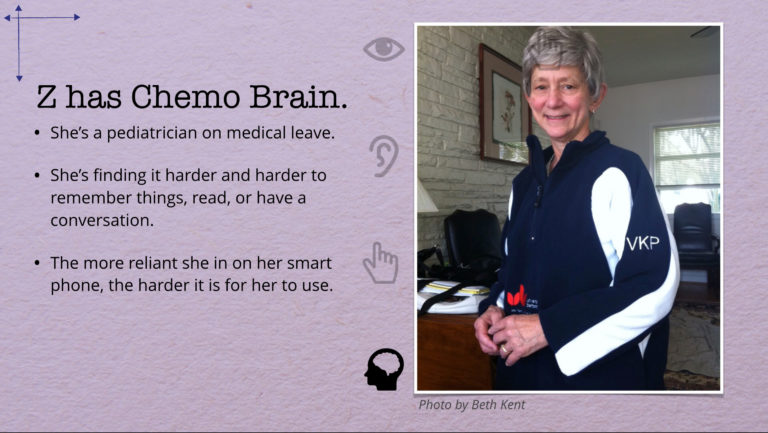We cannot assume that someone with a disability is an expert at being disabled.
Frankly, we can’t even assume they’ve been disabled for more than 24 hours. If I fell and broke my hand this morning you can’t exactly expect that by this afternoon I’m going to know all the ins and outs of keyboard navigating a website without a mouse.
I know this is going to come as a shock to some folks, but it turns out that when you cross the line from “not disabled” to “disabled”, a mysterious fellow in a cowl doesn’t appear on your doorstep to hand you a manual and a bunch of code words.
Tag: Accessibility
Access can be made easier or more difficult depending on the way the assessment task is presented; both in terms of visual presentation and in terms of the language used. The number and type of procedures required can also differentially affect students’ successful completion of the task.
This approach to analysis helped us to produce a list of recommended design elements that will be useful to teachers as they plan and write up their assessment tasks.
Visual accessibility
The layout of the task sheet helps the students access the important elements of the task
– The most important information is easy to find
– White space is used to separate sections
– Text size aids readability (11 or 12 point font with 1.5 line spacing)
– Margins are left-justified
– Visual cues direct student attention
– Information that is irrelevant to students is not included
– Procedural accessibilityConsistency and clarity of instructions
– Authentic context is relevant
– Common access barriers have been addressed in the design
– The task, objectives and criteria align
– Students are able to respond within the prescribed conditions
– Enough space and resources are provided for responses
– The assessment is scheduled to give students the best opportunity for success
– Processes for evaluating quality are clear
– Authentication strategies are included
– Student feedback on the draft task was sought
– Teacher peer feedback on draft task was sought
– Linguistic accessibilityDirections are clear
– Instructions are clear and direct
– Sentences are short and simply structured
– The language is free of bias
– Specialist language is defined using student-friendly terms
– Information is stated once only and if it needs to be referenced more than once, consistent terminology is used
– Working on Accessibility
– Javascript for Added Accessibility


